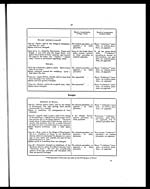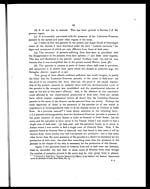Medicine - Institutions > Army health reports and medical documents > Scientific memoirs by officers of the Medical and Sanitary Departments of the Government of India > Number 19 - On kala azar, malaria and malarial cachexia > On kala azar, malaria and malarial cachexia
(50) Page 42
Download files
Individual page:
Thumbnail gallery: Grid view | List view

42
The results of the blood examinations made in this series of cases may be
tabulated thus :—
| Number of cases of kala azar examined. |
Number in which the so-called Leishman- Donovan parasites were found |
Number in which evidence of malaria was found. |
| 68 | 67 | 7 |
Now, these 68 cases had been diagnosed as kala azar before blood examinations
were made, and I have no doubt that all were true cases of the disease.
I believe, therefore, we are justified in concluding that the disease. known as
kala azar is always associated with the presence of the so-called Leishman-
Donovan parasites. Sometimes (according to the above results in about 10
per cent. of cases)* it is associated in addition with the presence of malaria
parasites or pigment, and very often it is associated in addition with the
presence of ankylostomes: doubtless other parasites are also present in many
cases.
The problem for solution is, which of these parasites, if any, is the cause of
kala azar ?
It will be remembered that same years ago one observer, who found
ankylostomes in every case examined, regarded this parasite as the cause of the
disease; and a few years later another observer, who found evidence of malaria
in every case examined, thought that the malaria parasite must be the cause: so
now that in the disease yet another parasite has been found, it behoves us to
examine with some care the evidence concerning its causal relationship. The
finding of the Leishman-Donovan parasite in a number of cases—and this, I
believe, is the sole ground upon which many observers base their opinion that
this parasite is the cause of the disease—is in itself, of course, no more a proof
of its causal relationship to the disease than is, let us say, the finding of
ankylostomes or of malaria parasites in a number of cases a proof that the
disease is due to either of these organisms. In a country like Assam, where a
large proportion of the population harbour parasites of several kinds, the finding
of any particular one in a patient suffering from some disease affords at the most
a probability that it bears a relation to some of the signs and symptoms present.
But there are other reasons than its presence in every case for the opinion
that the Leishman-Donovan parasite is the cause of kala azar, and, so far as my
experience enables me to do so, I shall summarize them as follows :—
(1) Kala azar is not due to the presence of the Ankylostomum duodenale.
This is agreed upon by all observers.
* Nearly all the patients seen in hospitals had been treated more or less vigorously with quinine ;
if they are excluded, the percentage is between 14 and 15.
Set display mode to: Large image | Zoom image | Transcription
Images and transcriptions on this page, including medium image downloads, may be used under the Creative Commons Attribution 4.0 International Licence unless otherwise stated. ![]()
| Permanent URL | https://digital.nls.uk/75027623 |
|---|
| Shelfmark | IP/QB.10 |
|---|---|
| Additional NLS resources: | |




